General militarization is underway in the Asia-Pacific region
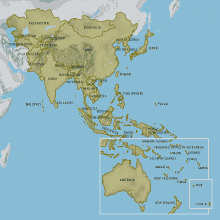 The rapid strengthening of the PRC, which became the second economy in the world, overtaking Germany and Japan. With simultaneous build-up of military forces. Caused the response of the countries of the Asia-Pacific region - the arms race began.
The rapid strengthening of the PRC, which became the second economy in the world, overtaking Germany and Japan. With simultaneous build-up of military forces. Caused the response of the countries of the Asia-Pacific region - the arms race began.The Asian elites felt very uncomfortable being neighbors of such a giant. In addition, many Asian countries have territorial disputes with Beijing.
Japan
Japan has even changed its military strategy due to China’s armaments (for the first time in 40 years)If earlier the main threat was seen from the North (from the USSR-Russia), now the attention of the Japanese self-defense forces is concentrated in the South - in relation to the DPRK and the PRC. Japan also has a territorial dispute with Beijing - the disputed islands of Senkaku (the Chinese name Diaoyudao).
The new military program of Tokyo provides for the preparation of self-defense forces to confront the possible landing of some enemy forces on the southern islands, and the only candidate for the islands is the People's Republic of China.
The military programs taken on the basis of all these arguments are striking in scope. In fact, Japan is starting a new militarization - Tokyo intends to spend 2011 billion dollars on upgrading the 2015 self-defense forces from 284 to 5. It is planned to purchase: 18 submarines (from 23 to 3 units), 12 destroyer, 10 fighters and XNUMX fighter jets, XNUMX fighter jets, XNUMX destroyers, XNUMX fighter jets and XNUMX patrons, and XNUMX XNUMX fighter, XNUMX destroyers, XNUMX fighters and XNUMX patrons, and XNUMX fighter jets and XNUMX patters, XNUMX destroyers, XNUMX fighters, and XNUMX patters, XNUMX destroyers, XNUMX fighters and XNUMX patters, and XNUMX fighter jets and XNUMX patters.
It is also planned to strengthen the components of the national missile defense system - the number of third-generation Patriot aerospace defense complexes (Patriot Advanced Capability-3) will be increased from 3 to 6. In addition, on all six Japanese destroyers equipped with the Aegis missile defense system (Aegis), the new American anti-missiles SM-3 (Standard Missile-3) will be installed. Currently, only 4 from 6 ship complexes have anti-missiles of this class at their disposal.
The United States offered Japan to purchase several fighter options., which will allow the country to significantly strengthen the fleet of combat aircraft, reports Defense News. Washington proposed the Tokyo 3 Fighter Model - F-15 Eagle, F / A-18 Super Hornet or F-35 Lightning II. No specific decision has yet been taken. Earlier it was reported that the Ministry of Defense of Japan decided to purchase an additional batch of Mitsubishi F-50 fighters from 2, created by Mitsubishi Heavy Industries and Lockheed Martin based on the American F-16 Fighting Falcon.
The Ministry of Defense of Japan has decided to update the fleet of search and rescue helicopters UH-60J Black Hawk, which are in service with the Air Defense Forces, according to a press release from the American company Sikorsky. Under the license of this company, the Japanese Mitsubishi Heavy Industries will assemble the 40 new UH-60J, which will replace the same number of similar machines in service with the 1991 of the year. The cost of building new helicopters and their maintenance will be 190 billion yen (2,3 billion dollars).
South Korea
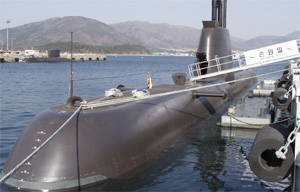 In 2006, Seoul began a program to spend 15 billions on retooling for 550 years. This is primarily about acquiring new combat aircraft and ships.
In 2006, Seoul began a program to spend 15 billions on retooling for 550 years. This is primarily about acquiring new combat aircraft and ships.Seoul considers North Korea to be its main opponent and in connection with the recent incidents (the mysterious sinking of the destroyer, the shelling of the territory by the North Korean army), the list of military programs was further expanded.
Seoul will begin buying low-profile fighters in 2012 year. According to preliminary estimates, the amount of funding for the FX III program will be 10 trillion won (nine billion dollars) - they plan to buy 60 fighters. In general, the FX program, which began in the 2008 year, involves the phased purchase of 120 new fighters for the 2020 year. The new aircraft must replace the outdated F-4E Phantom II and F-5E Tiger II fighters. 60 aircraft South Korea has already acquired in the first and second phases of FX. Within these stages, F-15K Slam Eagle fighters of the American Boeing concern were purchased.
Indonesia and Korea have agreed on the creation of a stealth fighter. Seoul plans to create its own generation of fighter "4 +". The new aircraft will be created with the use of stealth technology and, in terms of its functions, will have to surpass the KF-16 in service with South Korea. The cost of the KF-X project is estimated at eight billion dollars. The share of Indonesia in the aircraft development program will be 20 percent.
The South Korean company LIG Nex1, engaged in foreign military procurement in the interests of the Ministry of Defense, has signed a contract with the Swedish company Saab for the supply of artillery reconnaissance radars Arthur, reports Defense Aerospace. The amount of the transaction amounted to 450 million Swedish crowns (70,2 million dollars). At the end of 2009, South Korea received six Arthur radars from Saab, which are able to locate enemy artillery by calculating the coordinates along the projectile flight path. Such radars can also be used to determine the initial velocity of a projectile over the range of its fall. The range of Arthur is about 35 kilometers. Swedish radars can also be used to calculate the time and location of a projectile from a friendly weapons by enemy position. Thanks to this Arthur can be used to adjust artillery fire. The Arthur system can be fully deployed in two minutes, and can also be installed on helicopters.
The South Korean Ministry of Defense signed a contract with the American company Lockheed Martin to supply four C-130J-30 Super Hercules military transport aircraft, according to Flightglobal. Under the terms of the agreement, deliveries of new aircraft will begin in the 2014 year. Currently, the 12 of the C-130H Hercules transports the South Korean Air Force.
Korea Aerospace Industries, a South Korean company, rolled out a T / A-50 light attack aircraft, an armed version of the T-50 Golden Eagle training aircraft, Flightglobal reports. The Korean Air Force ordered 22 versions of such aircraft, which they plan to use as light fighters, attack aircraft, as well as for training ground attacks. Aircraft delivery is expected to begin in 2012.
South Korea will resume production of BMP K21. In particular, in April 2011, the troops will receive one hundred infantry fighting vehicles, of which 50 was planned to be put into service as early as 2010. These machines have been upgraded at the Doosan factory. In the next ten years, 900 K21 will be transferred to the troops.
Seoul plans to reinforce the Navy 6 th NNL.
Taiwan
Taiwan is one of the most likely areas of conflict because Beijing claims the whole state. And the Taiwan elite abandoned peaceful reunification, two Chinese states.
At the beginning of 2011, Taiwan will adopt the first of the 12 anti-submarine aircraft P-3C Orion, sold by Washington. They cost almost 2 billion dollars and replace the S-2T antisubmarine warheads.
Taiwan wants to increase the number of NNS.: Currently, the Taiwanese Navy has four obsolete diesel-electric submarines, two of which of the Guppy II type were made in 1944-1950's. and are only suitable for training personnel. More modern high-moon type submarines acquired in the Netherlands in 1987-1988 cannot provide effective protection for the island’s maritime borders. They wanted to buy diesel submarines in the United States, but diesel submarines were not designed or built there since the 1950s. Yes, and irritate Beijing, Washington once again does not want. Taiwan plans to buy up to the 8 PL, possibly in Russia, since the European Union does not want to quarrel with Beijing and also does not sell NNBs to Taiwan.
Taiwan has officially confirmed the production of cruise missiles. Taiwan produces two types of cruise missiles - Chichun, created on the basis of anti-ship missiles Hsiungfeng 2E, and supersonic Chuifeng. The characteristics of these munitions are not disclosed. It is only known that missiles can be launched both from land and from the sea, and are intended to destroy airports, missile bases and other important objects in southeast China. The Hsiungfeng 2E has an 800 kilometers range. Taiwan is expected to adopt the 300 units of such weapons.
Philippines
They increase the capabilities of their naval forces, mainly buying boats and patrol ships, including those that were decommissioned from other countries.
The Philippine Air Force intends to replace the fleet of outdated light attack aircraft Rockwell OV-10 Bronco, according to Flightglobal. Lightweight single-engine strike aircraft are considered as replacement options. Brazil’s Embraer EMB-314 Super Tucano, the Korean KAI KT-1 and the American Beechcraft T-6 Texan II are among the most likely aircraft to buy.
Vietnam
China has had serious conflicts with the PRC in the past and unresolved territorial disputes in the South China Sea region.
Vietnam operates in two directions, strengthens the armed forces and at the same time seeks allies, even in the person of the former US enemy. I am ready to provide the former Soviet naval base in Cam Ranh, India, or international forces, even the United States.
2008-2009 Russia and Vietnam signed contracts worth $ 4,5 billion, which provided for the delivery of Su-30MK2 fighter jets, Molniya type missile boats, Gepard-type corvettes and six 636-project six submarines. The question of the supply of air defense systems is being discussed - the Vietnamese are interested in almost everything that Russia has the Thor, Buk, C-300 anti-aircraft missile systems.
Singapore
Currently, Singapore is implementing a program to strengthen the naval forces. Earlier, the country's defense ministry was interested in buying several used P-3C Orion US patrol aircraft, talking about 4-6 vehicles.
Singapore has adopted six anti-submarine helicopters S-70B Seahawk, ordered from the American company Sikorsky in 2005 year, according to Flightglobal. The helicopters will be part of the Formideb class frigates air groups adopted by the Navy in the 2009 year.
The Singapore Navy has 4 submarines of the Challenger class and 2 submarines of the Archer class of Swedish construction. The first boat of the Challenger class was acquired by Singapore in the 1995 year, the rest in the 1997 year. Archer class submarines acquired in 2005 year. It is planned to buy another 2-VL.
Malaysia
Bought: 6 marine helicopters in England (1999-2004), 6 Meco-type frigates in Germany (1999-2010), 167 armored personnel carriers in Turkey (2000-2004), 18 MLRS in Brazil (2000-2002), 9 turboprops in Switzerland (2000-2001), 2 Scorpene-type submarines manufactured by France-Spain (2002-2009), 3 short-range air defense divisions in the UK (2002-2007), 11 light helicopters in Italy (2003-2006), 18 heavy Su-30MKM fighters in Russia (2003-2009), 48 main tanks RT-91M in Poland (2003-2010), 6 light helicopters in France (2003-2004), in 2005 ordered 4 A400M military vehicles in Europe, bought 10 more Swiss turboprops (2006-2007), bought 12 jet fusion aircraft in Italy ( 2006-2009), another 18 MLRS in Brazil (2007-2009), 56 tracked APCs in Turkey (2008-2009).
In 2010, Malaysia ordered from France simulators and various systems for NNLs, 8 self-propelled mortars French. production, spare parts and service of Su-30, 12 helicopters europ. Production.
Malaysia is interested in DRLO aircraft and control, naval patrol aircraft, multifunctional fighters, trainer, self-propelled artillery installations, landing ship-dock, 2 frigate, corvettes, St. 20 patrol ships, hydrographic vessels, minesweepers, patrol boats. Plans to buy another 2 diesel submarine.
Indonesia
A spokesman for the Indonesian Navy said that: The Indonesian Navy needed 39 additional submarines to protect the country's territorial waters from external threats. Currently, the Indonesian Navy has two Chakra type diesel-electric submarines (German-built 209 / 1300), which have been modernized by the South Korean Daewoo Shipbuilding and Marin Engineering (DSME). Jakarta plans to acquire two submarines in 2011-2012. The main candidates are the naval submarines of the 209 project, proposed by DSME, and the Russian submarines of the 636 Kilo project. Currently, Indonesia does not have enough finances to implement such a grand program. But Indonesia may well buy 2-4 diesel submarines.
Another loud statement was the desire to purchase Sukhoi fighters before the 180, but there is no money for that either. Currently, there are ten Su fighters in service: two Su-30MKs, three Su-30MK2s, two Su-27SK and three Su-27SKMs. More 6 want to buy in the near future.
Indonesia received Russian marines BMP-3F - 17 units, 3 attack helicopters Mi-35.
In November, 2010 of the year Indonesia acquired the Brazilian XenoX Super Tucano light attack aircraft to replace Bronco attack aircraft.
Bangladesh
The Government of Bangladesh is considering the possibility of purchasing submarines as an important part of measures aimed at ensuring the protection of the country's exclusive economic zone. Since Bangladesh is not a rich country, most likely is the acquisition of used submarines in China.
In 2001, the Ulsan frigate “Bangabandhu” was bought from South Korea. The capabilities of the Navy are also planned to be enhanced by the acquisition of five small patrol ships of the Khulna Shipyard company.
In 2010, the Bangladesh Navy received three ships from the British Navy, including the hydro-survey ship Roebuck and two coastal patrol ships, the Castle type. The United States has transferred to Bangladesh 16 boats such as "Difender". According to unofficial information, a contract with the People's Republic of China for the supply of the Bangladeshi Navy of two Jangway-2 frigates (project 053H3) and three Z-9 helicopters is in the process of implementation.
Taking into account the significant hydrocarbon reserves in the country - China seeks to fully occupy the Bangladesh arms market, supplies a lot of credit, or almost free of charge - its old weapons. In particular, for several years, Shaanxi Baoji Special Vehicles Company (Bangladesh Special Company) supplied Bangladesh with the Beijing loan light BF ZFB05 with wheel formula 4x4 and at the end of 2009 of the year announced the ongoing negotiations for the supply of additional premiums . In 2007, Chengdu Aircraft Industry transmitted X-NUMX single-seater F-12BG fighter jets and four two-seater FT-7BG, and is believed to be negotiating to supply Bangladesh's Air Force JF-7 (FC-17) and more modern J-1 aircraft -10).
Bangladesh upgraded its Medium Battle Tank Type 59, Chinese copies of the Soviet T-54, reports the Strategy Page. After improving the machines received an index Type 59G. The tanks were equipped with new guns, active-reactive armor and modern fire control systems. The Bangladesh type 59G army received 120-millimeter cannon and new Ukrainian horsepower 1200 engines.
Australia
No country has benefited more from China's economic recovery than Australia. China is its largest trading partner. He buys in Australia incredible quantities of coal and iron ore, which contributes to the rapid growth of sales of natural resources in the country.
But this does not reassure Australia, which believes that the growth of Chinese military power creates a threat to Australian security.
Australia plans to allocate 279 billion to the 20-year program to build up its military - mostly Canberra is going to spend it on new warships and the Air Force. This is the largest strengthening and expansion of the Australian armed forces since World War II.
Australia has completed the formation of the first squadron of F / A-18F Block II Super Hornet fighters, reports Defense Aerospace. These 12 aircraft, assigned to Amberley Air Force Base, have already taken up combat duty. In total, Australia should get an F / A-24 Fighter 18bought from Boeing in May 2007 for 4,6 billion dollars. The Australian Air Force perceives the F / A-18F as a transitional link between General Dynamics F-111 Aardvark fighter-bombers in early December and the promising F-35 Lightning II fighter planes.
As part of the Australian Navy are 6 class submarines Collins, 4 of them - on urgent or overhaul. It is planned to purchase new 12 naval vehicles.
Features of the arms race "Asian"
- Much attention is paid to the naval forces, since the theater of military operations and the disputed territories, mainly in the sea - islands, shelves. Especially great interest in diesel submarines.
- The scale and pace of the race, unprecedented since the cold war between the USSR and the USA.
- Poorer countries (like Bangladesh), and not yet having conflicts with China, acquire weapons from the PRC - a cheaper loan that was removed from service by China itself. Rich "Asian tigers" prefer to buy weapons in the US, build by themselves (Japan, South Korea), or buy in Russia (Vietnam, Indonesia).
- http://topwar.ru"rel =" nofollow ">http://topwar.ru
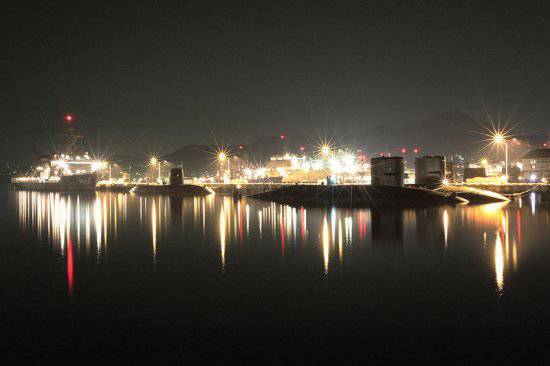
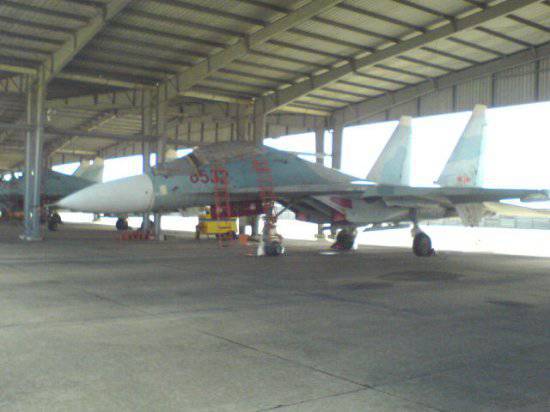
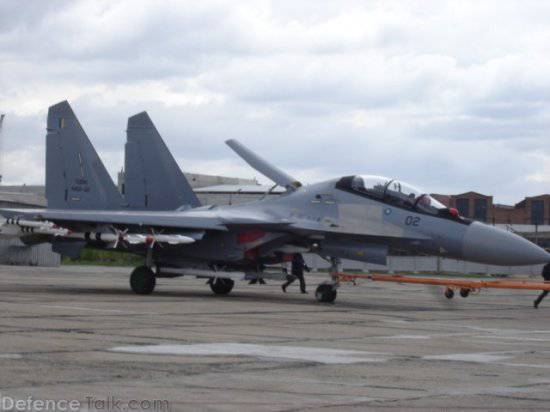
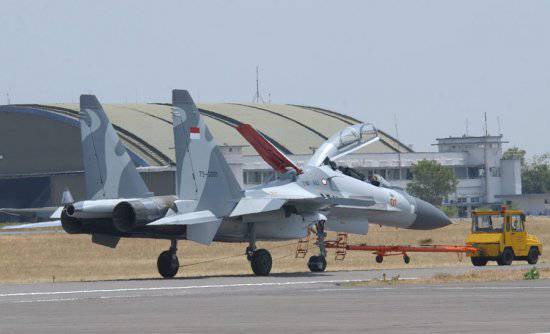
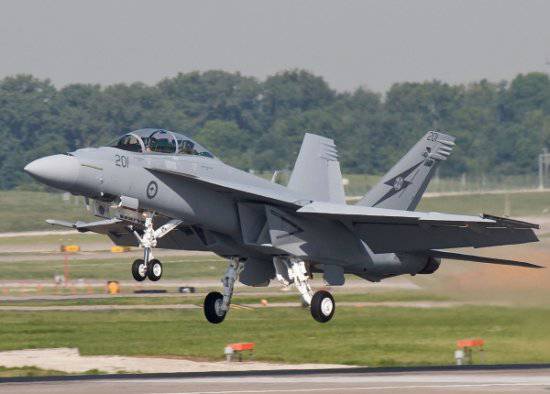
Information